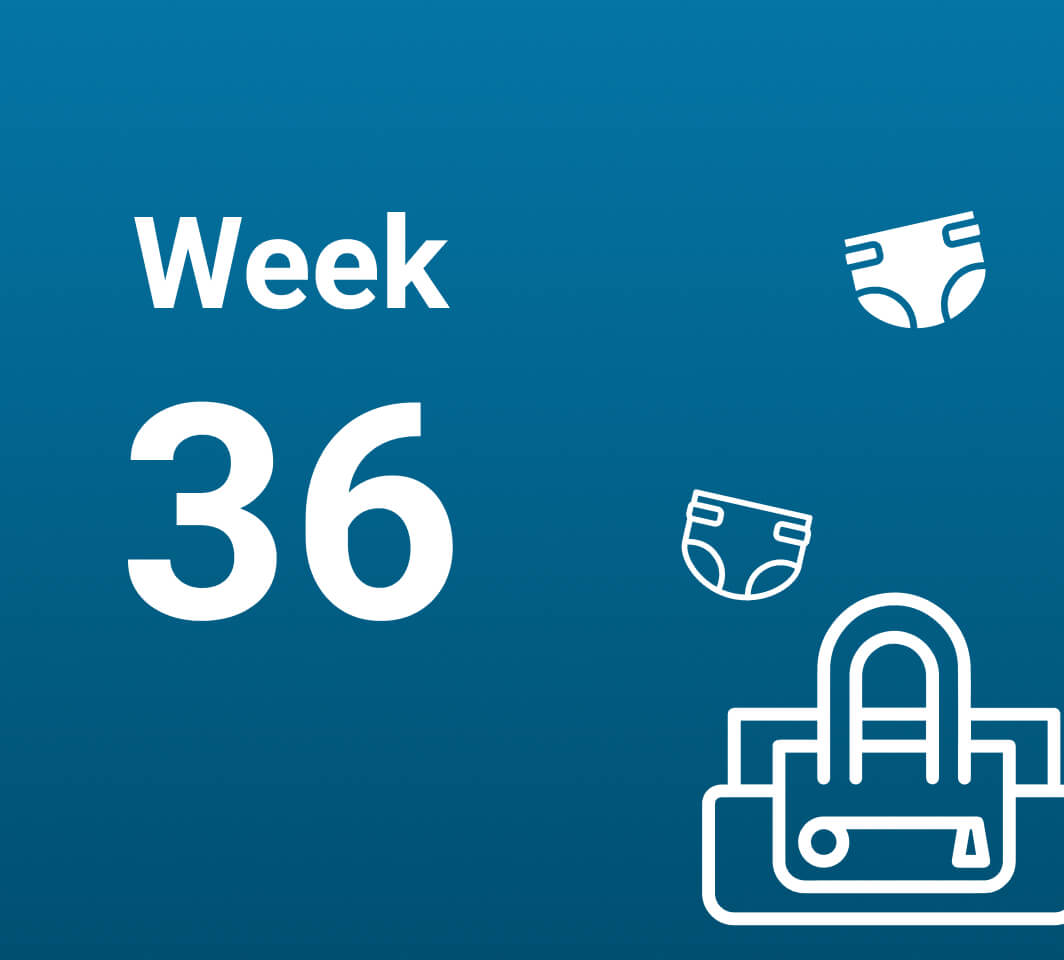Your Changing Body at Week 36
Your body continues to make both physical and mental preparations for the big day that’s fast approaching. Here’s what you can expect at your 36th week of pregnancy:
Feel the Need to Nest?
If you feel an unusual surge of energy and a compelling need to clean, decorate, or organise, you might be experiencing what’s called nesting.
- Nesting can be useful in moderation if it helps to occupy your mind during the wait for your baby to arrive.
- Accomplishing tasks now can give you more time after your baby is home. It’s a good time to launder 0-3 month clothes and place them in drawers, prepare your baby’s crib, and set up the diaper pail.
- Just try not to overdo it and wear yourself out.
Noticing Symptoms?
You might continue to notice several of the typical late-pregnancy symptoms.
- Your cervix might start to dilate in the weeks, days, or hours before the birth of your baby. Every woman and even every pregnancy is different.
- Joints and tissues in your body continue to soften and loosen as your body prepares for your baby’s birth. This might be especially significant in your pelvic area.
- You might continue to feel hip pain on one side or lower-back pain.
- Braxton-Hicks contractions might become more frequent as you edge closer to your due date. Remember, these practical contractions play an important role in helping your body rehearse for childbirth.
- You might notice more practice contractions after physical activity or if you are not getting enough fluids.
What are Braxton-Hicks (false labour) Contractions?
- Irregular and remain irregular
- Don’t get closer together as time passes
- Often are weak and stay that way (might have stronger contractions followed by weaker ones)
- Stop when you rest, walk, or change positions
- Vary in length and intensity
- Don’t affect your cervix
- Pain usually felt only in the front
What are True Labour Contractions?
- Regular intervals or regular pattern
- Contractions grow closer together over time
- Increase in strength/intensity over time
- Keep coming no matter what you do
- Usually last 30 to 90 seconds (shorter when they begin and get progressively longer and stronger)
- Cause cervix to dilate (open)
- Pain begins in back and moves to front


